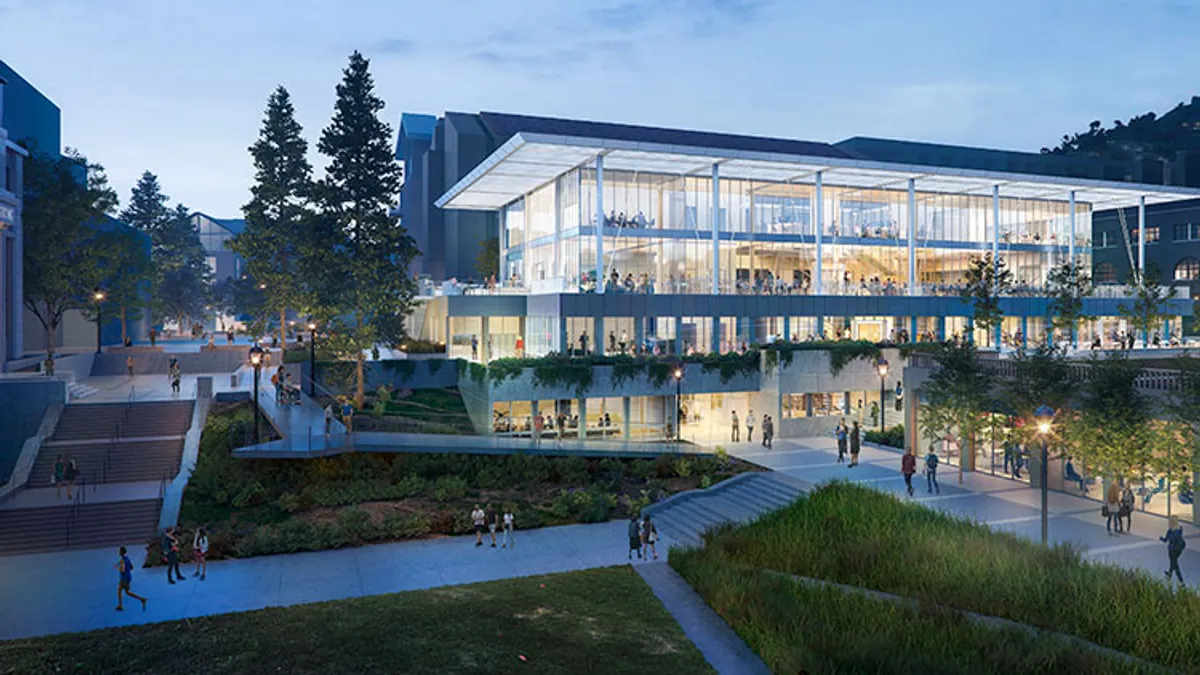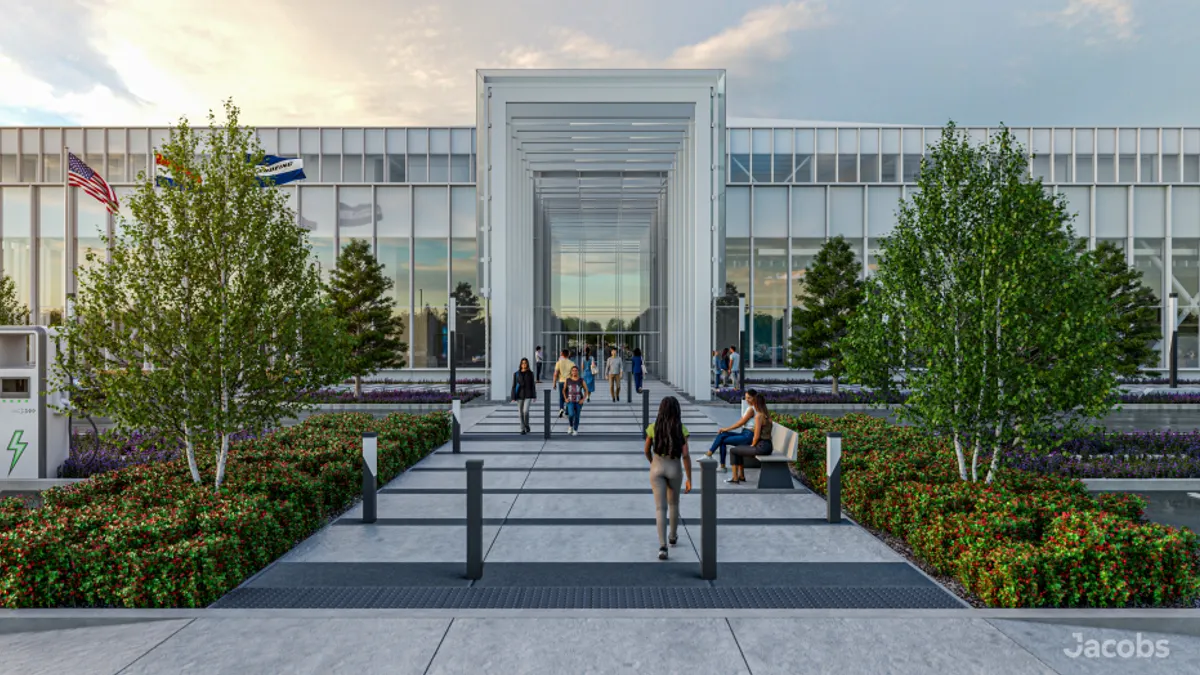This is the second in a series of articles looking at the skilled labor crisis in construction, its causes and potential solutions. Click here for the entire series.
Skilled trade companies are desperate for talent.
How desperate? Just listen to the stories of people like Donald "Bo" McNabb, senior instructor in construction management at Indiana State University's College of Technology. McNabb shared a story from his son, a vocational high school teacher who took his class to tour a limestone quarry in Bloomington, Indiana.
"The gentleman in charge of the plant said 'we'll take just about everybody right now who has a good attitude and is willing to learn,'" McNabb said. "'We'll hire them on the spot.'"
For McNabb and others who spoke with HR Dive, the problem is nothing new for construction employers. In fact, sources said they have been aware of the industry's coming talent crunch for decades as experienced workers depart with no clear replacements lined up. An analysis this year of 2019 federal employment data found the median age for construction workers is 41, putting even more pressure on employers to find elusive younger talent.
Now, that ongoing issue meets a labor market defined by the "Great Resignation"; one report last month estimated that more than one in four workers who started a new job in 2021 left their previous jobs without a new position lined up. Though the motivations of each individual worker may not be clear, observers often tie at least some of that migration to the pandemic.
"When people think about their careers, they jump on an educational conveyor belt," said Casey Welch, CEO of Tallo, an employment and scholarship platform geared toward younger workers. "It may stop for some after high school, after college or after military service, then they go, 'what do you want to do?' But the pandemic has stopped that conveyor belt for some people. They're open to different industries."
Research so far suggests that openness is especially characteristic of younger workers. Survey data published in August by Adobe show more than half of Generation Z employee respondents said they planned to pursue new jobs in 2021, while 59% of this contingent also ranked lowest in job satisfaction among generational groups.
The trouble is, when these workers do seek to pursue new avenues, they are not very likely to put construction in their sights.
Welch pointed to Tallo's April report analyzing survey responses from more than 29,000 Gen Z high school and college students about the brands, industries and career paths they desired. In a ranking of 22 industries, construction placed close to dead last, attracting the interest of 16.7% of respondents. Only forestry ranked lower.
Asked why a generation that is already primed to try new things may not even give their industry a second thought, construction employers, consultants and educators point to a mishmash of factors and a multitude of perceived failures. Still, the opportunity is there, some argue, and it will take a concerted effort to bring future generations to the job site.
An industry in need of renovation
When it comes to building long-term talent pipelines, the construction industry is not what it used to be.
In 2003, there were 1 million construction workers in the U.S. ages 16 to 24, according to U.S. Bureau of Labor Statistics data. This figure peaked at more than 1.7 million workers in July 2006 before bottoming out at 547,000 in January 2010. As of last month, the industry's pool of young workers still has yet to return to the heights it experienced before the mid-2000s recession.
Part of the problem may have to do with candidates themselves, said Paul Crovella, an assistant professor at the State University of New York's College of Environment Science and Forestry who specializes in sustainable construction. Specifically, he said younger members of the workforce simply have less experience working with their hands. As schools shift their focus to training students on computers and software, that may mean less exposure to the more physically-intensive skills required in the construction field.
But the industry has its own complications, including gender, socioeconomic and other stereotypes about who a construction worker is, Crovella said. "That's where, today, construction companies are working very hard to open up and be inclusive," he continued. "It's unfortunate but it's still prevalent enough in the industry that it creates big problems."
Given the next wave of workers comes from a generation that, according to Pew Research Center, is more racially and ethnically diverse than any that have come before it, it may not come as a surprise that some contractors are open about their plans to address diversity and inclusion.
Cincinnati-based Messer Construction funds diversity scholarships at a series of Midwestern universities including the University of Dayton and the University of Kentucky, among others. According to Nick Apanius, the company's senior vice president in charge of HR and professional development operations, the scholarships are a way for Messer to give back to institutions it works with to cultivate diverse talent. The company is also working to expand its footprint with historically Black colleges and universities, said Isabel Perez, a recruiter at Messer.
A separate program, Messer's Urban Workforce Development Initiative, seeks to build talent by looking at the same places in which the company builds. Working with local nonprofits, Messer's website says the company provides participants free training, social support and the promise of a full-time job upon completion of the training program.
The company's diversity hiring goal for 2021 is 20% across all positions, one that Apanius acknowledged Messer has not yet met. "We're working on it," he said of workforce D&I. "Over the years, our economic development department has made some strides, but we still need significant work."
Messer is not alone; industry stakeholders across the board have launched similar outreach programs, though Crovella said he believes "it will be a generation before we see those kinds of outreach being effective."
Construction Dive Associate Editor Zachary Phillips contributed to this report.
























